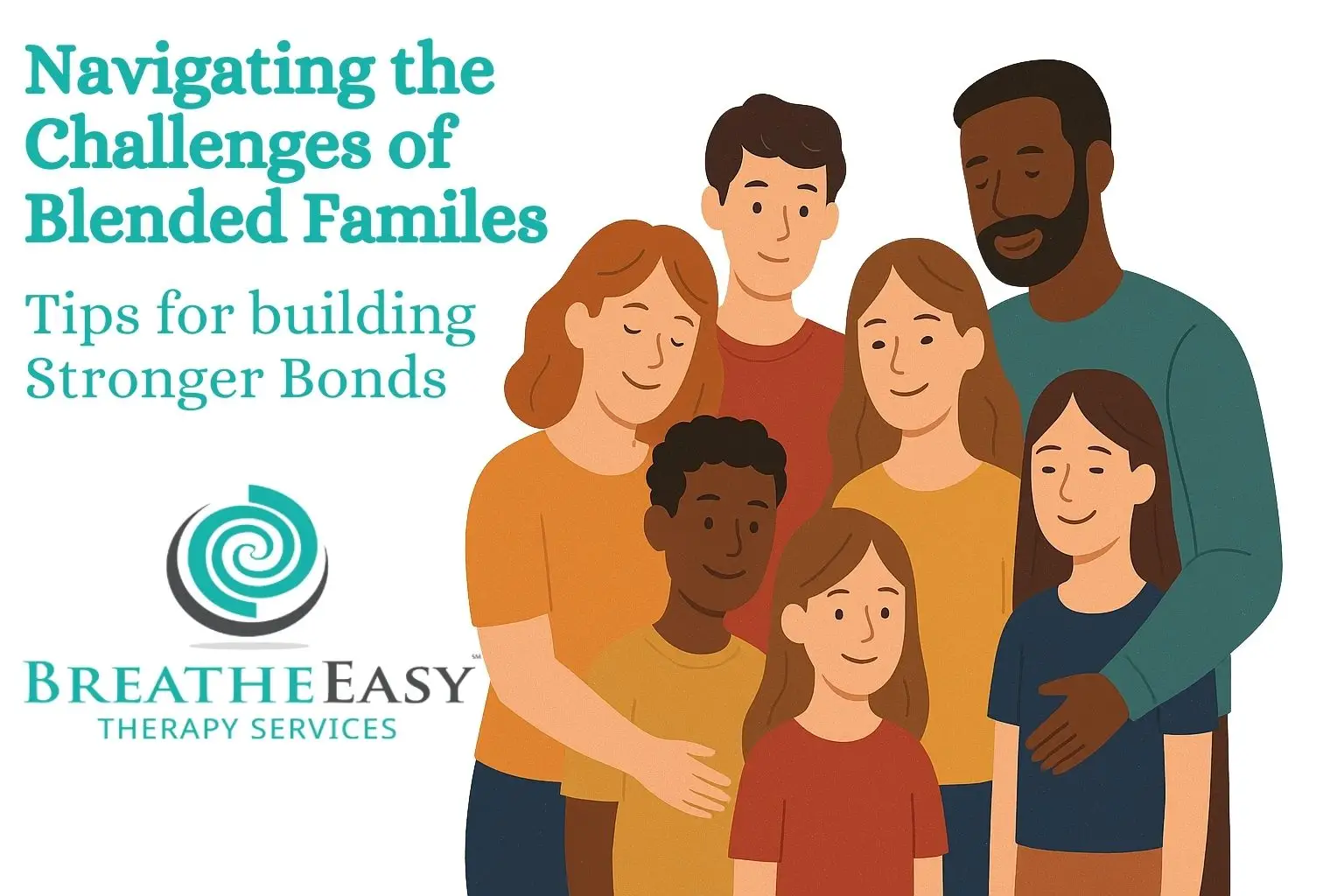Navigating the Challenges of Blended Families
Blending families can be a beautiful journey — one filled with new connections, shared experiences, and the promise of growth. But that journey often comes with unique emotional hurdles. At Breathe Easy Therapy, we work closely with families navigating these transitions, helping them build strong, lasting bonds through empathy, communication, and intentional care. In this article, we’ll explore some of the most common challenges of blended families, and offer practical tools to help you create harmony in your home.
Understanding the Dynamics of a Blended Family
A blended family (also known as a stepfamily) forms when two individuals with children from previous relationships come together to build a new household. While love may bring the couple together, blending different parenting styles, family values, and emotional histories takes time and patience.
Some common challenges include:
- Loyalty conflicts between children and biological parents
- Differences in discipline styles
- Unclear family roles and expectations
- Adjusting to new siblings or step-siblings
- Residual feelings from past relationships or divorces
5 Practical Tips for Strengthening Blended Family Relationships
1. Prioritize Open and Honest Communication
Encourage all family members to express their feelings, even if it’s uncomfortable at first. Creating a safe, judgment-free environment where everyone’s voice is heard sets the stage for long-term trust.
2. Give Relationships Time to Develop
It’s normal for children (and adults) to feel unsure or hesitant in the beginning. Don’t rush the bonding process — it takes time, shared experiences, and consistency to build genuine connections.
3. Establish Clear Roles and Boundaries
Each household member needs to understand their role in the new family unit. Co-create household rules and expectations together so everyone feels involved and respected.
4. Show Consistency and Unity as a Couple
When partners present a united front — particularly around parenting decisions — it provides stability. Private disagreements are natural, but resolve them together and present a cohesive plan to the family.
5. Seek Professional Support When Needed
Sometimes, outside guidance from a blended family therapist can make all the difference. Therapy offers a neutral space to work through complex emotions, rebuild trust, and strengthen bonds.
You’re Not Alone — We’re Here to Help
At Breathe Easy Therapy, we understand that every blended family is unique. Our compassionate therapists work with parents, children, and step-siblings to improve communication, reduce conflict, and build strong foundations for the future.
If you’re looking for support navigating the challenges of blended families, we’re here to walk alongside you every step of the way.
📞 Contact us today to schedule a session or learn more about our family therapy services.





